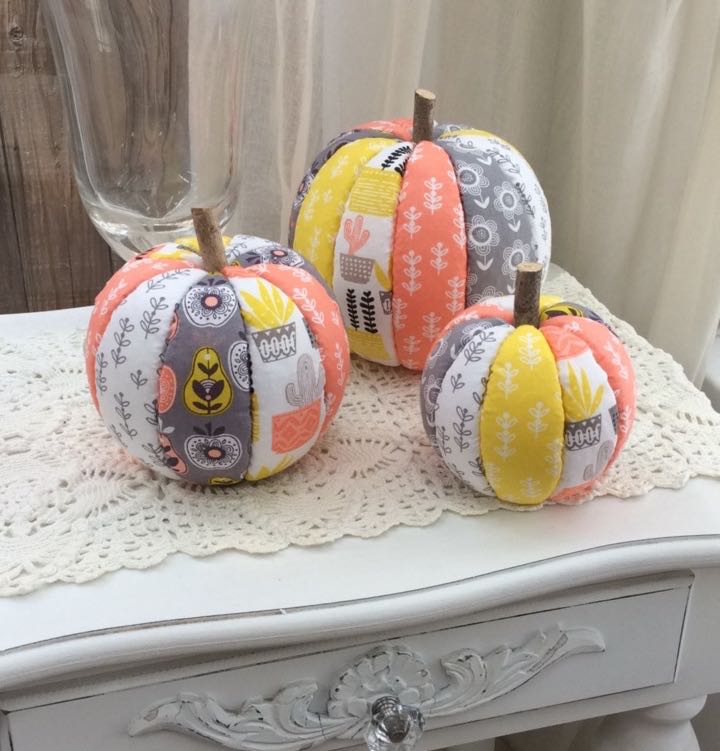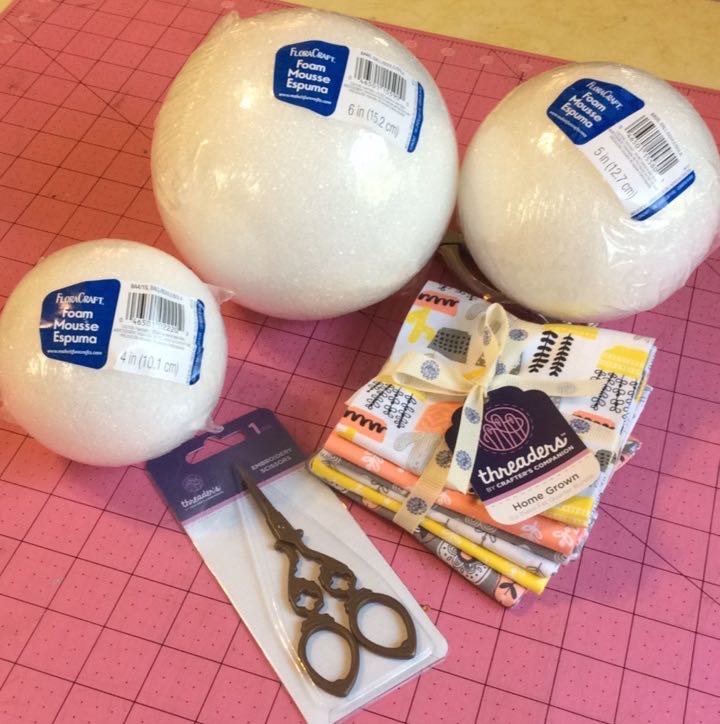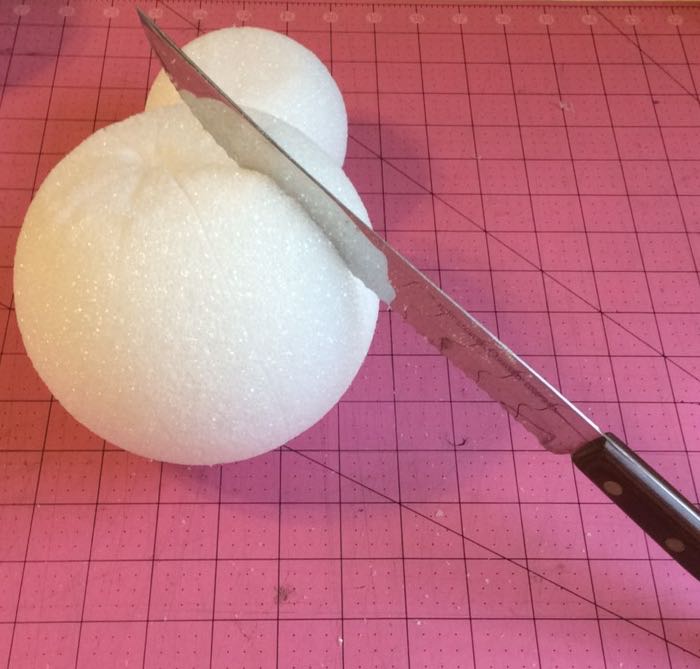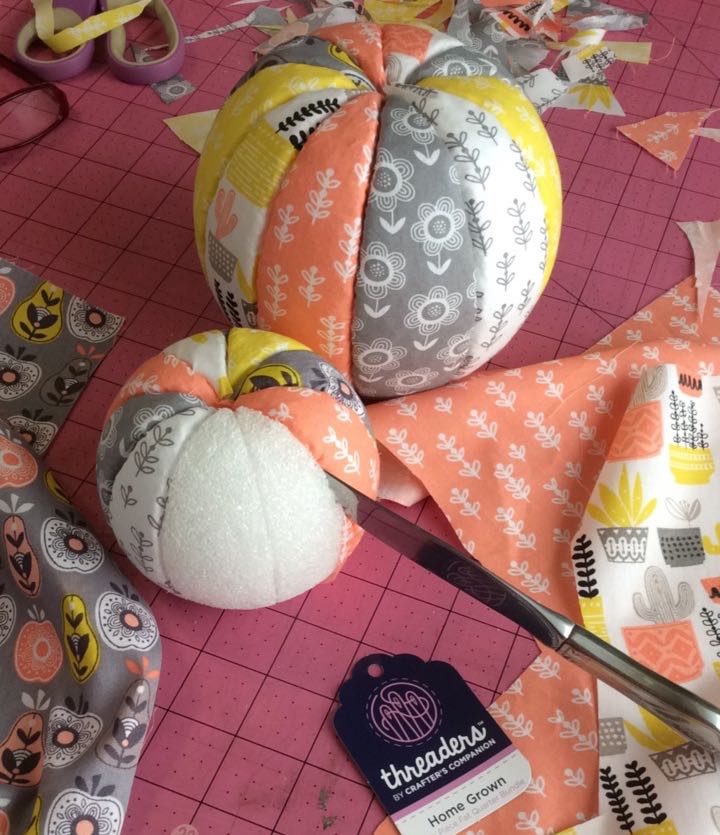
If you are someone who loves to craft and sew, chances are you have a collection of beautiful fat quarter packs that coordinate perfectly. These versatile fabrics are perfect for small sewing projects, and today we’re going to show you how to make a set of no-sew fabric pumpkins using your favorite fat quarters. Not only are they a fun and easy project to create, but they are also perfect for adding a touch of autumnal charm to your home décor.

Grab yourself 3 Styrofoam balls in a variety of sizes . To get started, you’ll need three Styrofoam balls in varying sizes and a set of Threaders Home Grown fat quarters. Once you have all your materials ready, it’s time to get started on this fun and creative project.

The first step is to carefully cut slices in each Styrofoam ball, and then take a bit off the top and bottom with a serrated kitchen knife. Be sure to be very careful while doing this to avoid any injuries. Once you have your foam balls prepared, you can move onto the next step.

Cut pieces of fabric about 1/2 inch bigger than each foam slice. You can use any fabric you like, but fat quarters work particularly well for this project. Choose fabrics in colors and patterns that coordinate with your home décor or reflect the season. Once you have your fabric ready, it’s time to start tucking it into the foam ball.
Using a butter knife, carefully tuck the fabric into the slices of foam. Be sure to smooth out any wrinkles or bumps, so your fabric looks clean and polished. Continue this process until the entire foam ball is covered in fabric. You can use one fat quarter per pumpkin or mix and match different fabrics for a unique look.
Once your pumpkin is fully covered in fabric, it’s time to add the finishing touch. Head outside to your yard and clip a few pieces of branches. You can use any type of branches, but we recommend choosing those that are thin and flexible. Trim them to the desired length and with a bit of glue, place them in the center top of each fabric pumpkin. This will give your pumpkin a cute and natural stem that adds a touch of rustic charm to the overall look.
And there you have it, your own set of beautiful no-sew fabric pumpkins. These pumpkins are perfect for adding a touch of autumn to your home decor, but you can also use them year-round. Place them on a bookshelf, use them as a centerpiece, or give them as gifts to family and friends. The possibilities are endless, and the best part is that you can create these beautiful pumpkins in just a few simple steps. So, go ahead and grab your favorite fat quarters and get started on this fun and easy project today.

So pretty! Love your fabrics!
Thank you for sharing such a great idea. I plan to use Halloween fabric with solid black between each. Wow! finally a project I can get excited about.
I used cinnamon sticks(3) glued together for my stem. Working on stiffening some green fabric for leaves. Thank you for this idea!